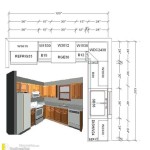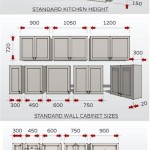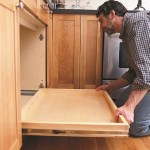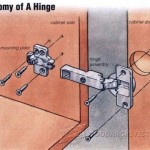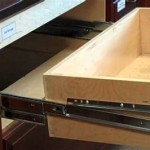Kitchen Door Handle Positions: A Guide for Optimal Functionality
Choosing the right position for kitchen door handles may seem like a minor detail, but it can have a significant impact on the overall functionality and aesthetics of your kitchen. The placement of these seemingly simple fixtures influences ease of use, accessibility, and visual harmony. A well-considered handle position enhances the flow of movement within the kitchen, creating a space that is both practical and pleasing to the eye. This guide explores the key factors to consider when deciding on the best placement for kitchen door handles and provides practical tips for making the most of this design element.
Factors to Consider for Ideal Handle Placement
The ideal position for kitchen door handles depends on several factors. These include:
- Door Size and Shape: The size and shape of individual doors play a crucial role in handle placement. For example, narrow doors may require handles positioned closer to the edge, while wider doors offer more flexibility. The shape of the door, whether standard rectangular or with a curved or angled design, will also influence the most suitable handle placement.
- Door Swing: The direction in which a door swings – inward or outward – affects the best location for the handle. Inward-swinging doors often work well with handles placed near the edge, while outward-swinging doors may necessitate different placement to ensure comfortable access.
- Cabinet Layout: The overall layout of cabinets and appliances within the kitchen impacts the flow of traffic and the most convenient handle placements. For example, placing handles where they obstruct the passageway or interfere with opening drawers can lead to frustration and inconvenience.
- Personal Preferences: Ultimately, personal preferences play a significant role in determining the ideal handle position. Some people prefer handles placed high on the door for easier access, while others favor lower placement for a more ergonomic grip.
Standard Handle Positions for Kitchen Doors
While there are no set rules for handle placement, certain positions are considered standard and offer practical advantages. These include:
1. Center Placement
Placing handles in the center of the door is a classic approach offering balance and symmetry. This position is particularly suitable for doors that are regularly opened and closed with both hands. Center placement ensures a comfortable grip and effortless maneuvering, regardless of the user's hand preference.
2. Bottom Placement
Bottom placement is often favored for doors with limited space or those that swing inwards. Handles placed near the bottom of the door allow ample clearance for opening and closing, especially in tight spaces. This position is also an excellent option for cabinets that require a more discreet presence, as the handles blend seamlessly with the door's design.
3. Top Placement
Placing handles at the top of the door is a less common approach but can be highly practical. This position is advantageous for doors that are infrequently opened or those located at a high level. Top placement promotes a sense of openness and minimizes visual clutter, making it an ideal choice for contemporary kitchens.
4. Offset Placement
Offset placement is a more unconventional approach that involves placing handles slightly off-center on the door. This option adds a touch of asymmetry and can be particularly effective in creating a visually interesting focal point. Offset placement also works well for cabinets with unique door styles, such as those with curved or angled designs.
Tips for Optimizing Handle Placement
To ensure optimal handle placement and maximize functionality, consider the following tips:
- Consider the Door's Swing: For inward-swinging doors, placing handles near the edge allows for ample clearance and prevents obstructions. For outward-swinging doors, placement closer to the center may be preferable.
- Prioritize Functionality: Choose handle positions that facilitate easy access and minimize interference with other elements in the kitchen. Consider the flow of movement and the placement of appliances and other cabinets.
- Embrace Consistency: Maintaining a consistent handle height throughout the kitchen promotes a sense of order and visual harmony. This consistency also streamlines use and reduces the likelihood of accidental bumping or collisions.
- Test and Adjust: Before committing to a specific handle placement, try opening and closing doors with handles in various positions. This allows you to assess functionality and identify the most comfortable and practical placement.
Ultimately, the best position for kitchen door handles is a matter of individual preferences and the unique characteristics of each kitchen. By carefully considering the factors discussed above and following these practical tips, you can select placements that enhance the functionality, aesthetics, and overall flow of your kitchen space.

How To Place Cabinet Knobs Pulls

Cabinet Hardware Placement Guide
Cabinet Hardware Placement Where To Put Knobs And Handles Vevano

How To Place Cabinet Knobs Pulls

A Simple Guide For Cabinet Knob Placement Julie Blanner

Learn How To Place Kitchen Cabinet Knobs And Pulls Cliqstudios

How To Install Cabinet Handles Ultimate Stress Free Tips

Comprehensive Guide To Cabinet Hardware Size Placement Handles More

Cabinet Hardware Placement Guide

A Simple Guide For Cabinet Knob Placement Julie Blanner
Related Posts



